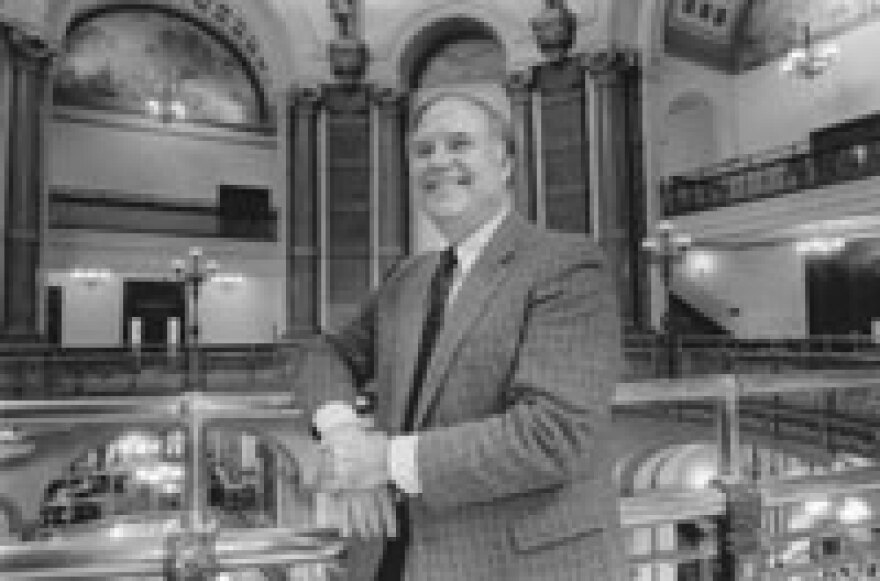Thirty-five years ago this month, the Sixth Illinois Constitutional Convention finished crafting a document designed to bring state government out of the horse-and-buggy era and into the space age.
Meeting one final time in the historic chamber of the House of Representatives in the Old State Capitol in Springfield for a formal signing ceremony, this remarkable group of 116 men and women commended their handiwork to Illinois voters, who ratified it two and one-half months later.
In the ensuing years, events generally have shown the collective wisdom of the delegates, as the document they drafted after nine months of intense, sometimes heated, debate and study has provided a sound framework for Illinois government.
Because "finances are the very lifeblood of government," as one Con-Con scholar wrote at the time, probably the most critical challenge the convention faced was laying the constitutional groundwork for a solid tax structure and good fiscal management.
More so than any other provisions of the 1870 document, its revenue article was seen as a cumbersome straightjacket, hampering efforts to bring modern financial practices to state government.
The century-old article reflected a state that was largely rural and agrarian; its framers assumed that most state funds would come from a property tax imposed on land, buildings, livestock, household goods and other visible signs of wealth, which were to be taxed uniformly based on value. To supplement property tax receipts, the General Assembly could tax certain occupations — among them, peddlers, hawkers, showmen, jugglers and innkeepers — and could impose franchise and privilege taxes.
In the ensuing years, events generally have shown the collective wisdom of the delegates, as the document they drafted after nine months of intense,sometimes heated, debate and study has provided a sound framework for Illinois government.
Under the uniformity requirement, Cook County's long-standing practice of assessing homes at a lower percentage of market value than business parcels was clearly impermissible, a conclusion the courts were careful to avoid reaching. And tax relief plans — such as removing the sales tax from food and medicine — were deemed unconstitutional and never pushed.
By the time Con-Con met, though, the property tax was but a memory as a source of state dollars, replaced by the sales tax in 1933 at the heart of the Great Depression. And less than a year before the convention, the legislature in 1969 enacted the income tax, now the state's largest revenue source.
The old Constitution also strictly limited state borrowing by requiring referendum approval for debt in excess of $250,000, reflecting the concerns of an earlier era about vast public works schemes that nearly bankrupted the state in the mid-19th century.
The provision did not stop state borrowing, of course. Instead, the limit encouraged governors and lawmakers to create supposedly independent entities that would borrow money to pay for needed facilities, then rent them to the state, a subterfuge that resulted in higher interest costs.
The 1870 charter lacked a finance section; instead, its relatively few provisions about fiscal management were added to the executive, legislative and education articles, and were more concerned with making sure state funds were used for proper purposes than in setting out a structure for budgeting and financial reporting.
Against this setting, the delegates produced revenue and finance articles that allowed for greater flexibility in taxation policy and provided clearer direction for budgeting and auditing.
More important, the final product embodied enough compromise on critical issues to secure ratification.
Thus, the 1970 revenue article provides that the corporate income tax rate cannot exceed the personal rate by more than an 8-to-5 ratio, the same proportion as the existing rates, and acceptable to those who wanted a graduated tax and those desiring the same rate for all taxpayers.
Cook County real estate can be assessed at differing levels for property tax purposes, a key provision to winning support of Chicago voters, but the highest rate can't be more than two-and-a-half times the lowest, and farmland can't be assessed at a higher rate than single family homes.
In addition, by allowing the legislature to provide exemptions and credits, the new article cleared the way for the sales tax break on food and medicine, worth some $1.2 billion annually to consumers, as well as the income tax credit for property taxes paid, roughly a $400 million savings for homeowners. Similarly, a variety of business-related tax breaks have been used to spur job creation and economic development over the years. In all, lawmakers have provided tax relief worth almost $6 billion annually.
The 1970 Constitution also relaxed state debt limitations, allowing bond sales with three-fifths legislative approval. Under those terms, the state has issued some $32 billion in bonds, underwriting numerous highways, bridges, classrooms, prisons, sewage treatment plants, mass transit and other capital projects that would have been difficult to construct on a pay-as-you-go basis.
Moreover, state budget managers frequently have taken advantage of the 1970 document's short-term borrowing provisions, which allow bond sales within a fiscal year, to meet cash flow needs early in a budget year, when revenues come in more slowly and spending is higher.
Unlike its 1870 predecessor, the 1970 charter also sets out a fiscal process, calling for an annual budget proposed by the governor and appropriations approved by lawmakers, all within the estimate of available funds. Delegates wisely required that budget bills can't include other subjects, thus precluding Congress' bad habit of tacking controversial issues onto essential spending bills.
While the provision would seem to require a balanced budget, in reality the state generally ends the fiscal year with more outstanding bills than cash in the bank to pay them. Not since FY 2001 has the state finished in the black; for FY05, the budgetary deficit is estimated at about $320 million.
That reality aside, the Constitution's framers deserve plaudits for giving Illinois a solid fiscal foundation.
Charles N. Wheeler III is director of the Public Affairs Reporting program at the University of Illinois at Springfield.
Illinois Issues, September 2005






